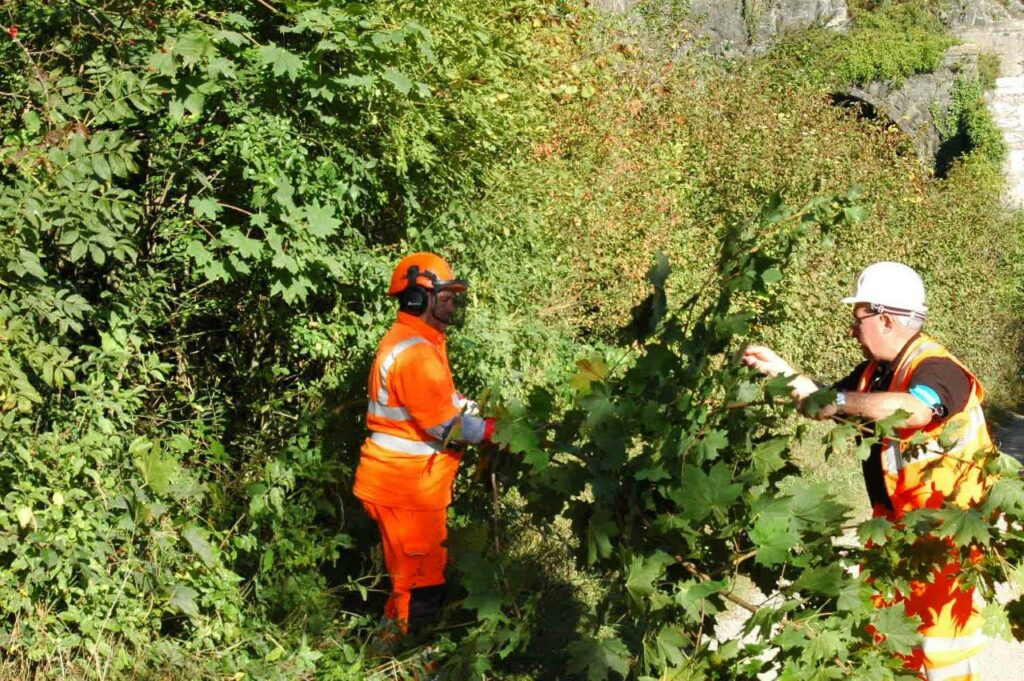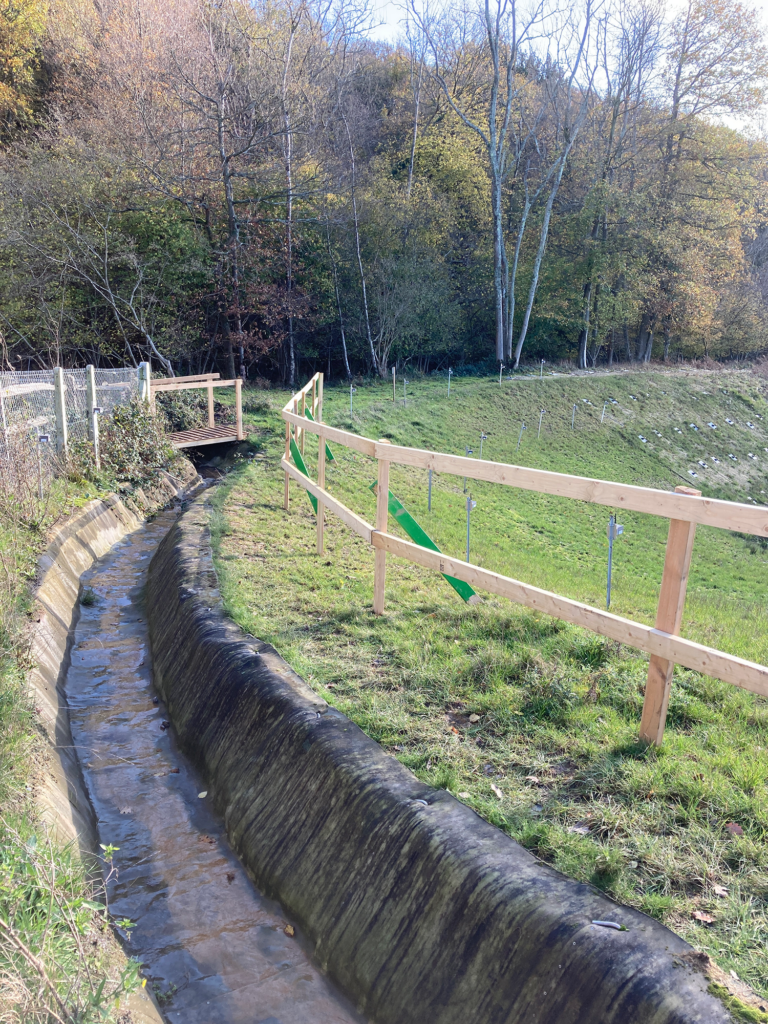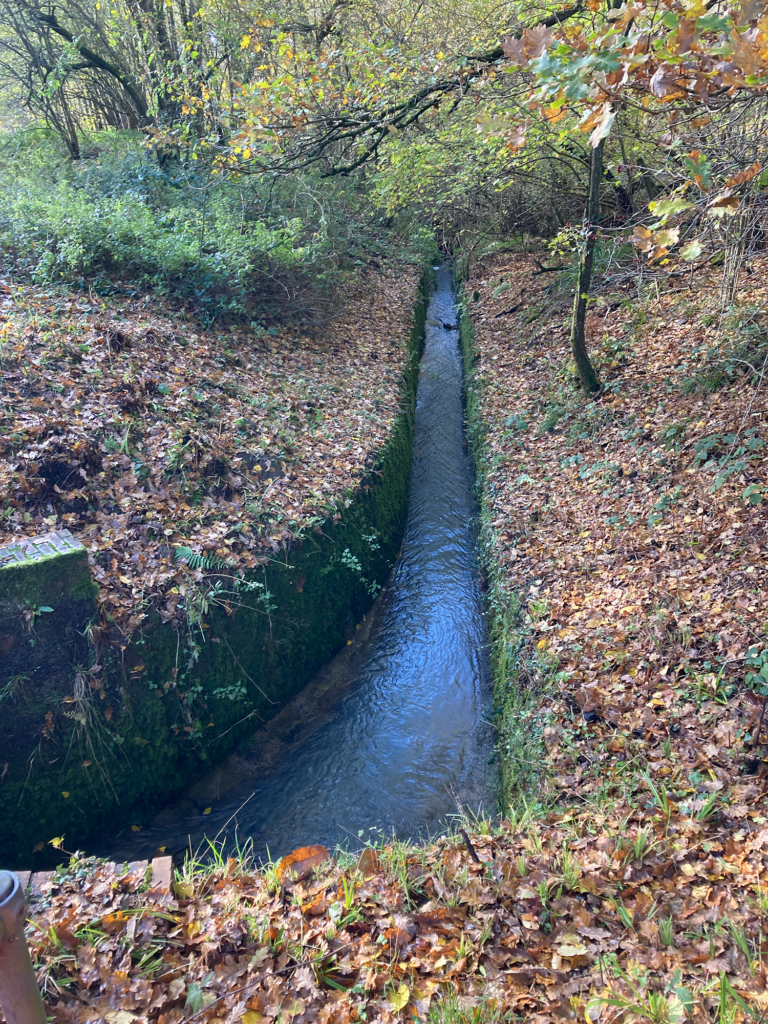Rail Engineer recently met up with Sana Wajid CEng MICE FPWI CMngr CMI principal engineer drainage and off-track asset assurance Southern Region, to hear how better asset stewardship of the Drainage and Off Track (DOT) assets is being implemented in the region. Off Track (in this definition of DOT) refers to vegetation and boundary and access points.
Any rail network has a vast amount of drainage, vegetation, and fencing which all has to be managed efficiently and effectively alongside the entire route. In Great Britain, the main line network is 15,904km (9882 miles) long and, given that DOT is both sides of the railway, the total distance to be managed is getting on for the circumference of Earth. Sometimes referred to as the ‘child asset’, DOT can be overlooked when it comes to creating a safe and operational railway system, and Sana’s mission is to raise the profile and importance of DOT asset stewardship.
Changing environment
The significance and importance of effective drainage and water management systems is becoming even more important. Instances of flooding have quadrupled in the last 40 years and doubled since 2004, and with climate change things will only get worse. Warmer temperatures and more rain also increase vegetation growth, and unlike most other countries in Britain it is a legal requirement that railways must fence their land against incursion by livestock. Good fencing is also required to deter trespass and vandalism.
Historically, drainage on the railway was managed separately, as track drainage and earthworks drainage, by track and earthworks engineers in their ‘spare’ time. However, drainage is a system of ducts and pipes, which collects water and carries it from the point it comes on to the railway infrastructure to an appropriate discharge point. Water management wasn’t always managed adequately by people who knew about the engineering and science behind hydrology, hydraulics, and geohydrology.
In the last 10 years there have been at least eight incidents of derailment that have had poor drainage as one of the underlying causes of failure. In 2020, the derailment of a passenger train at Carmont in Scotland, resulted in three fatalities and Network Rail also received a £733,000 fine from an event in 2013. Sana and her colleagues around the country are dedicated to learning from these tragic historical events and they realise that things need to improve.
Following the Carmont train derailment, Network Rail launched an independent Task Force, led by Professor Lord Robert Mair, to help better manage cuttings and embankments and improve the understanding and response to severe weather events.
The Task Force said that surface and sub-surface water management is probably the single most important factor in determining if, when, and where an earthwork failure will occur and that the effective control of water, and proper understanding and maintenance of drainage assets is very important to the safe operation of the railway network.
Sana explained to me how she and others are working on the recommendations and are adopting a broader and more integrated approach to the management of drainage and vegetation, taking account of changing weather patterns. The first stage is to establish a proper and comprehensive geospatial inventory of the drainage assets. This will also have to identify water catchments, as this will help to determine how much water is going to flow towards the railway.

Resourcing competent people is always a problem and Sana wants to encourage and mentor graduate engineers and managers towards DOT. This is important as graduates may be naturally attracted to the traditional engineering disciplines such as track and structures. Skills such as hydrology, hydraulics, geohydrology, and environmental management need to be acquired and valued. This will extend to drainage inspections being undertaken by sufficient and professionally qualified competent staff, and there needs to be off-track maintenance engineers and managers having a similar role and grading to track maintenance engineers.
There needs to be a more consistent proactive approach to drainage management, rather than just being reactive to problems as they occur. This needs to use innovative, outcome-based drainage management, and to balance safety, operational performance, sustainability, and to take into account whole life costs. Sana is ensuring that this is the case throughout the Southern Region.
Vegetation management
Lineside vegetation management may simply be considered by some as cutting down trees, but it is far more complicated and important. Vegetation management is a process that uses risk assessment to deliver sustainable management of the lineside estate and the safe running of the railway infrastructure. The risks from lineside vegetation need to be controlled by inspection, management, and maintenance to protect the railway – and to create a biodiversity wildlife corridor.
Responsible management of vegetation and respecting railway neighbours also improves the resilience of railway and stakeholder relations. The risks from poor management of lineside vegetation include trees within falling distance of the track or third-party land, vegetation affecting such things as overhead line equipment, signal sighting, level crossing sighting, access, and inspection of assets. Leaf fall affects rail adhesion and track circuit operation, and injurious and invasive weeds can cause damage to railway infrastructure and third parties.

Lineside vegetation must be managed to allow other assets to function safely and be inspected and maintained, and must comply with legislative and environmental requirements. Vegetation management has to create conditions that add value to the lineside and the surrounding environment, in terms of promoting and providing biodiversity, protecting areas of ecological and historical importance, and improving the resilience of the railway infrastructure. For example, removing deep rooted trees may improve leaf fall risk but could adversely affect the stability of earthworks, disturb wildlife and nesting birds, and upset neighbours of the railway.
Vegetation management and bioengineering techniques are an important part of stabilising delicate earthwork slopes, and the negative impacts of de-vegetation need to be carefully considered. In summary, vegetation needs to be treated as an asset and the railway system managed as a biodiversity wildlife corridor.
Boundary and access points
The Railway Safety (Miscellaneous Provisions) Regulations 1997 replaced a large number of old provisions, some dating back as far as 1839. This created a number of ‘goal-setting’ duties with one being to prevent unauthorised access to the railway infrastructure, for example by means of lineside fencing.
Railway fences also mark the boundary of railway land, serve as a deterrent to trespass and vandalism, and are a legal requirement to prevent incursion by livestock animals. Figures produced by Network Rail in 2019 show that incidents involved more than 800 animals through the year. Of these, about 80 were struck by trains. The downtime caused by the incidents led to hundreds of hours of delays to rail travellers, with passenger compensation claims exceeding £1 million. Livestock farmers also suffer the cost of lost animals and the trauma associated with a rail accident.


Responsibility for installation, maintenance, and repair is also included under legislation on keeping passengers safe from livestock and human incursion within The Railways Act 2005, and Network Rail is the responsible party for fencing.
Typically, fences are 1.8 metres high, but this is subject to the type of land use adjacent and the level of risk. Fences need to be checked on a regular basis, typically annually, and the type of fence provided also depends on the use of the land adjacent to it. This may change so Network Rail also needs to identify the use of the adjacent land from its inspections. Network Rail may also need to promptly investigate any fencing and to check its suitability for keeping livestock off the railway, and it may need to quickly replace or repair parts of the fencing.
Land management plan
To provide a regional DOT strategy, Sana has produced a comprehensive detailed improvement management plan, to illustrate the improvements required and how these will be delivered as part of better asset stewardship and maintenance of DOT assets on the region.
This covers the identified problems and pressures, the actions and enablers required, and the positive and expected outcome improvements for drainage, vegetation, and fencing. It’s a live plan and subject to daily management, monitoring, and adjustments. As part of the plan, Sana is keen to capture the knowledge and lessons learned from previous incidents and asset failures of DOT, with appropriate action plans to improve things in the future and to be ready as possible for weather extremes. The essential objective is to be more responsive to the needs of train operators, fare paying passengers, and freight customers in the region.
The improvement plan details how the available funding will be aligned with the business needs of the region and enable efficient use of the supply chain. It covers the importance of a well-maintained relationship with stakeholders and the need for reliable and consistent data. An organisation delivery policy for the required interventions is defined, with the aim of achieving asset sustainability with targeted maintenance and renewals. Research and development initiatives are also targeted to regional problems, and defined to support innovation and new ways of working. Improvements and actions / recommendations from inquiries and audits also feature in the comprehensive regional plan.
Sana organises a ‘DOT community catch up’ held every six to eight weeks with all the section managers and asset management team, to bring the DOT community together and to highlight the good work being undertaken on the region. She also has an Engineering Verification and Recognition programme (EVR) which not only investigates and improves things that are not working as well as they could be, but also recognises and celebrates the successes of DOT delivery.
DOT is the often-overlooked backbone of the rail network and its assets, but Sana is committed to improving the asset strategy and maintenance arrangements. Creating the ecological drainage, vegetation, and boundary framework base to enable the safety and stability of the railway is an important and interesting role, and one that Sana recommends graduate engineers and managers consider as part of their railway career.

